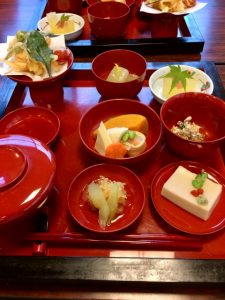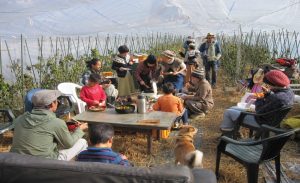Natural Food Movements in Japan
Japan is considered to be the country with the highest life expectancy and it has a lot to do with our diet, Washoku. And when we talk about Washoku, it is usually about the exoteric side of Washoku, but there is an esoteric side to it, and without knowing about it, you are missing a significant portion of Japanese wellness.
In the last post, I talked about Shojin Ryori which is a plant-based diet practiced among monks in Zen monasteries, and Zen monks are known for long-living.
Shojin Ryori came to Japan during the Kamukura Period and was practiced for 700 years. In the beginning of the 20th century, influenced by Shojin Ryori, Sagen Ishizuka started a natural food group called Shokuyokai. He advocated a plant-based diet with brown rice. It was the beginning of natural food movements as we know it in Japan.
George Ohsawa was in Shokuyokai, too, and later he started advocating the macrobiotic diet and it spread all over the world.
The macrobiotic movement has spread in Japan, as well, and it has been one of the most influential dietary practices in the natural food movement. Many new dietary practices were born out of the macrobiotic diet or by the people who have once been involved in the macrobiotic movement.
In other words, the Japanese natural food movement has been affected by the macrobiotic diet and Shojin Ryori. Plant-based Brown rice diets with concepts called Ichibutsu Zentai Shoku, and Shindofuji, which were shared both in Shojin Ryori, and the macrobiotic diet.
Today, there are many different kinds of diet in the natural food movement in Japan, such as Nagaokashiki Koso Genmai, Miraishoku Tsubutsubu, and Banno Koboeki.
Nagaokashiki Koso Genmai suggests that we should eat Koso Genmai, which means fermented brown rice or enzyme brown rice. Miraishoku Tsubutsubu recommends that we should eat Zakkokumai, which is a mixture of different grains, including white rice, barley, pearl barley, black rice, red rice, millet, and so on. Banno Koboeki is a brown rice liquid, and people who practice Banno Koboeki drink this liquid, which you can make at home, every morning, and Natto germ liquid every night to adjust the condition of bacteria in your body.
The Japanese natural food movement has been evolving in the last decade or so, and it is a lot more than the macrobiotic diet, which the people in the West might be familiar with as the Japanese natural dietary practice.
Anyway, if you want to lead a long and healthy life, you want to look into the diets of the natural food movement, along with the diets of Japanese blue zones(long-lived villages) and regular Washoku.
In the next post, I will share with you the people who practice all three, the people I think are the healthiest in Japan.
The Ikigai Diet: The Secret Japanese Diet to Health and Longevity
POD Paperback
https://www.amazon.com/gp/product/4991064864
Kindle

